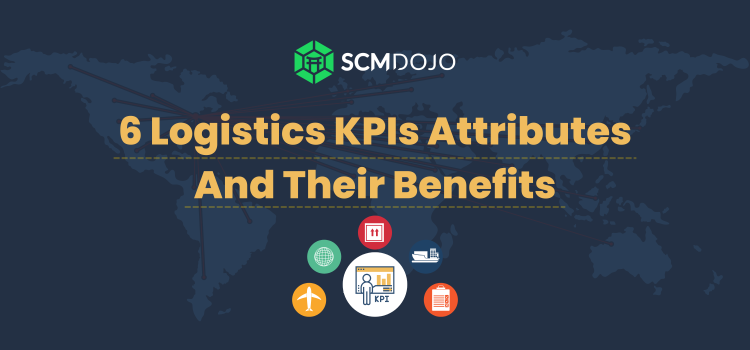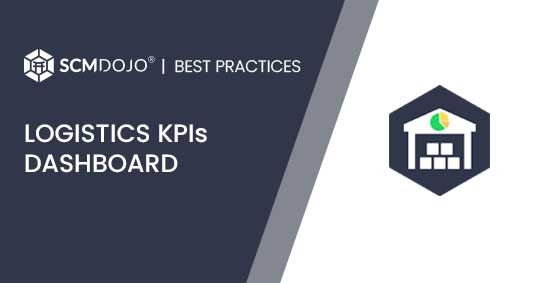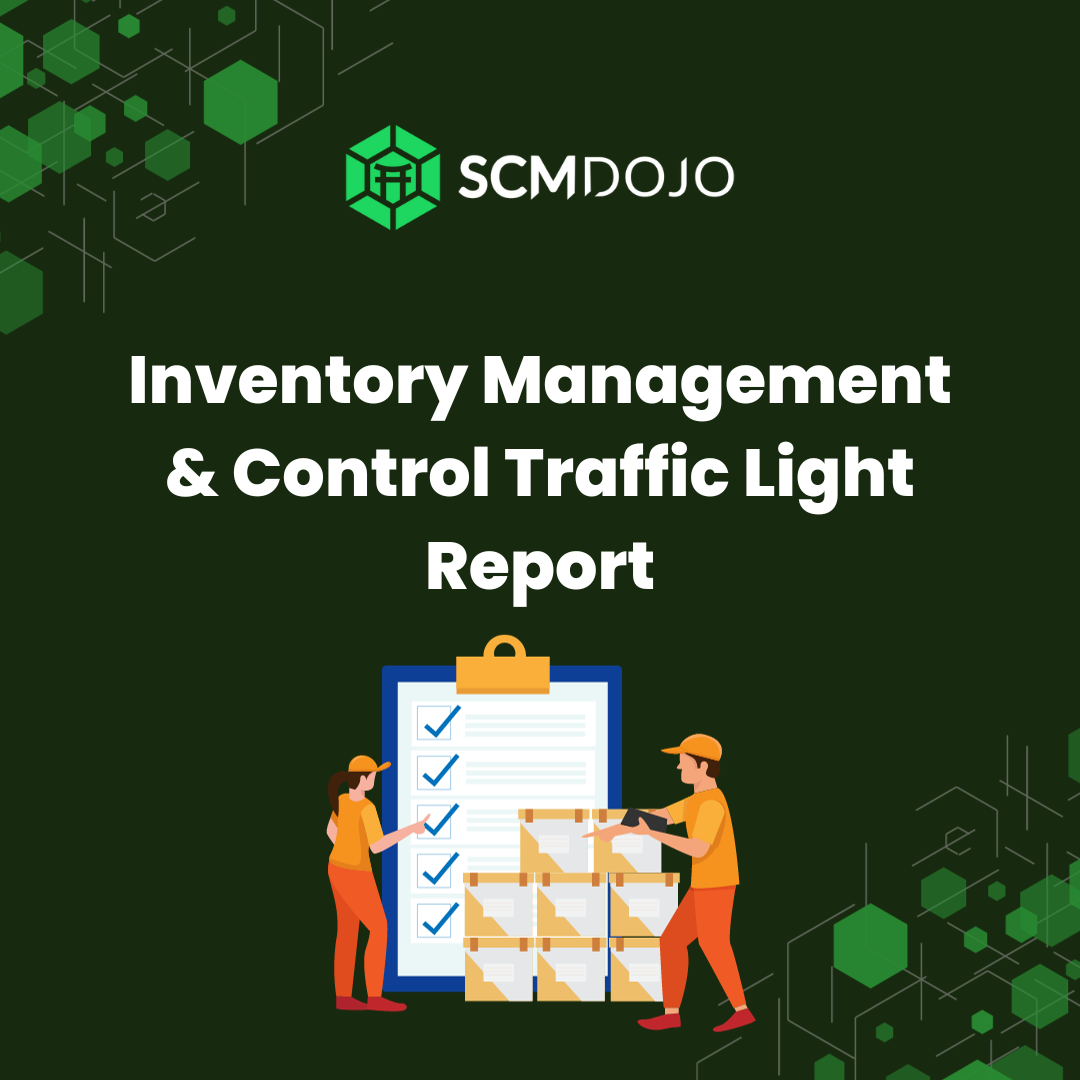Logistics KPIs (Key Performance Indicators) measure how well an organization logistics function is performing. They’re used to evaluate the effectiveness of operations and identify areas for improvement. Logistics KPIs examples can vary from Basic 5 Logistics KPIs to a detailed list of 47, which you can get from here.
Logistics is the central system that controls physical inventory flow in a supply chain. Logistics allows businesses to perform value-added services and deliver valuable products to the end consumer.
Whether it be retailers, wholesalers, e-commerce, or SMEs, every player in the market requires Logistics, whether private, semi-private, or public. Experts wrote many articles emphasizing the importance of Logistics, Logistics optimization, Logistics planning, and Logistics space optimization. One of the articles on Logistics space optimization can be found here.
What we will cover in this blog
- Key Performing Indicators
- Attribute 1 – Productivity related Logistics KPIs
- Attribute 2 – Time-related Logistics KPIs
- Attribute 3 – Cost related Logistics KPIs
- Attribute 4 – Quality related Logistics KPIs
- Attribute 5 – Safety related Logistics KPIs
- Attribute 6 – Cultural related Logistics KPIs
- Conclusion
Key Performing Indicators
Key performance indicators (KPIs) are a group of numerical indicators that may assess how well a firm performs over time. They enable us to track the organization’s effectiveness in attaining its objectives in particular.
Similarly, Logistics KPIs indicate the logistics’ total efficiency and direct the managers to carry out operations optimally.
Key performing attributes signify and monitor the Logistics functioning and create a visibility pattern in the supply chain. These indicators can be monitored weekly, monthly, or half-yearly basis. For example, one of the leading furniture retailers, IKEA, monitors these KPIs every week as Logistics is the core competence of IKEA.
While understanding the Logistics performance attributes, let us classify them in PACT.
PACT stands for Purposeful, Actionable, Continuous, and Trackable.
To implement these recommended Logistics KPIs in your company, you should use our Logistics KPIs Dashbaord which we have designed with through research.
Attribute 1 – Productivity related Logistics KPIs
Productivity attribute signifies the Logistics’ day-to-day operational efficiency. Productivity attribute is trackable and continuous.
The productivity attribute includes the processes and their impact on the supply chain. Every business has different productivity KPIs depending on the type of business, supply chain model/design, and consumer base.
Productivity Logistics KPIs Example:
Picking Order productivity = Total number of order lines picked per month / total labour hours available for picking activity
Shipping Productivity = Total order lines shipped per month / total labour hours available
Delivery Productivity = Total order delivered per month / total wh labour hours available for delivery activity
Warehouse Space Utilization = Total warehouse ares occupied by activities / total warehouse capacity floor (m2) * 100
Benefits
- This attribute focuses on labour productivity, good in-flow productivity, storage/replenishment productivity rate, throughput productivity, and many others. For example, throughput productivity will define the total amount of orders leaving the Logistics in a day or an hour.
- It helps draw a line between efficient performers and inefficient performers.
Attribute 2 – Time-related Logistics KPIs
One of the purposeful & trackable key performing attributes. The time attribute is calculations of different lead times. In this attribute, managers focus on the time required to complete a single operation.
The Logistics space optimization depends on the time taken by different KPIs mentioned in the dashboard. The time attribute includes – receiving operation time, dock to stock time, replenishment time, equipment downtime, and many more.
Time- related Logistics KPIs Example:
Order to Delivery Lead Time = Actual delivery date – purchase order creation date
Receiving operation time = Total time taken / time taken to unload each pallet
Order picking time = No.of Picks / Time taken by each pick
Putaway time = Time between available storing & effective storing / number of pallets stored per month
Benefits
- Perform lean with Logistics activities.
- Identifying the right SLIDs (Sales Location ID) for the right product
- Helps in scrutinizing which inventory management method to adopt.
Attribute 3 – Cost related Logistics KPIs
One of the essential attributes would be the cost and related KPIs. Cost-related KPIs are pragmatic and fall at the intersection of PACT columns. Cost KPIs enable managers, directors, and senior leaders to understand companies’ spending. Cost KPIs have some significant indicators like – Inventory Costs, Labor Costs, order processing costs, 3PL supplier spend costs and many more, which contribute to the smooth functioning of a logistics operation.
One drawback of Cost KPIs is that it is inversely proportionate to Quality KPIs.
Cost Logistics KPIs Example:
Order Processing Costs = Total of office and employee cost to process an order / number of order per month
Warehouse Maintenance Cost = Total cost to maintain the building warehouse + Total equipment maintenance cost + Others
Out of Stock costs = Total lost sales per month / total order received per month
Labor Costs = Salary + Charges + Bonuses + others
3PL Suppliers Spend = Sum of 3PL Suppliers Invoices in a given month
Benefits
- Helps to analyze if the company is functioning on the allocated budget.
- Bifurcates high-cost functions to low costs functions.
- Cost KPIs help managers know profit margins in each activity and can allocate a sufficient amount in the next FY.
Attribute 4 – Quality related Logistics KPIs
We might call the Quality KPIs the efficiency rate determining if standard operating procedures are functioning effectively. Quality KPIs are measured with a purpose and action in mind. While some of the KPIs are trackable, some are not; hence, we would not put Quality KPIs in the trackable matrix.
Quality-related Logistics KPIs are measured through every step of logistics. We should also note that there is a thin line between quality KPI and productivity KPI. Some of the most important KPIs present in Quality are – Order Fill rate, Stockout rate, Picking accuracy, Replenishment accuracy, and Customer Satisfaction Rate. They all have different formulas, which can be found in the Logistics KPI Dashboard on the SCMDOJO website.
Quality Logistics KPIs Example:
Receiving Accuracy = Total number of pallets unloaded per month correctly / total pallets unloaded per month * 100
Storage Accuracy = Number of pallets stored correctly / number of pallets unloaded * 100
Picking Accuracy = Orderlines picked correctly / total orderlines picked * 100
Delivery Accuracy = Total order delivery correctly / total order delivered * 100
Fill Rate = (Number of Ship From Stock Orders Shipped within 24 Hours after Order Release/ Total Number of Ship from Stock Orders) x 100
Perfect Order Fulfillment = (Number of Perfect Order / Total Number of Orders Delivered) x 100
Benefits
- Function according to Industry standards.
- Identify the bottlenecks in the logistics process.
- Helps improve profitability and customer satisfaction
Attribute 5 – Safety related Logistics KPIs
One of the most underrated Logistics KPIs would be Safety and Security. We have seen many incidents causing business and human losses due to unhealthy and unsafe working conditions. Operating low-quality forklifts/high-reach trucks, hazardous communications, unsafe wiring, less number of exits, etc., are some examples of low safety standards. Data published in 2018 claims that the cost of work injuries is close to 57.6 billion USD.
Safety-related Logistics KPIs help identify the incidents occurring time, accidents rate, cause of accidents, addition or removal of some SOP to avoid accidents, and damage rate. Companies are focusing more on these aspects to attain employee confidence in a logistics warehouse.
Safety Logistics KPIs Example:
Time Lost Due to Injury = (Lost Time in Hours Due to Accidents) / (Total Number of Hours Worked)
Safety – Near Miss Reports = Number of near misses reported each month
Safety- Accidents Records = Number of days since last reportable incident
Total Recordable Incidents rate = (Number of Recorded Injuries in a Year × 200,000)) / (Number of Hours Worked in a Year)
Benefits
- Correct SOP to reduce the accident rate.
- One of the KPIs of Safety Attributes is TCIR. TCIR stands for Total case incidence rate. TCIR helps identify incidents that are happening per 100 employees. The less the score, the better the operations in a warehouse or logistics process.
Attribute 6 – Cultural related Logistics KPIs
Cultural-related Logistics KPIs are new in the group of attributes and fall purposeful and continuous matrix of the PACT. The cultural KPIs include stability of the workforce within the warehouse; more the rate, less the performance. Moreover, we also have cultural entropy score as one of the cultural logistics KPIs, which decides the time and energy spent on unproductive & unnecessary work.
Besides the two mentioned, we have a manager satisfaction score and an employee net promoter score.
Cultural Logistics KPIs Example:
Employee Turnover Rate = (Employees Who Have Left) / (Average Number of Employees) × 100 = Employee Turnover Rate (%)
Employee Net Promoter Score – Not likely, Neutral, Likely
Benefits
- Helps managers understand the workforce’s stability because people move the supply chain.
- Improve engagement at the workplace.
- Helps understand key lagging areas.
To conclude..
Supply Chain KPIs, Logistics KPIs, Procurement KPIs, and other tools help managers evaluate the current chain and move towards betterment in every way possible. The finest supply chain management will produce successful long-term outcomes.
Any kind of business development and expansion will benefit over time. It might be challenging to guarantee the efficient operation of intricate systems like supply chain management. There are several groups involved, each with their own objectives and procedures. A few crucial areas that need special attention include tracking shipments and keeping an eye on inventory levels to guarantee efficient order processing.
Therefore, a logistics study is crucial. Numerous KPIs and indicators may be used by businesses to assess the effectiveness of their supply chain management system and identify areas for improvement.
References
Hedler, F., 2015. Global warehouse management: a methodology to determine an integrated performance measurement. HAL Open Science, [online] pp.96 – 105.
Essential Business Guides. n.d. 21 Essential Warehouse KPIs to Measure Performance – Zoho Inventory.
LEGACY Supply Chain Services. 2015. Top Warehouse Performance KPIs | LEGACY Supply Chain.
About the Author- Dr Muddassir Ahmed
Dr MuddassirAhmed is the Founder & CEO of SCMDOJO. He is a global speaker, vlogger and supply chain industry expert with 17 years of experience in the Manufacturing Industry in the UK, Europe, the Middle East and South East Asia in various Supply Chain leadership roles. Dr. Muddassir has received a PhD in Management Science from Lancaster University Management School. Muddassir is a Six Sigma black belt and founded the leading supply chain platform SCMDOJO to enable supply chain professionals and teams to thrive by providing best-in-class knowledge content, tools and access to experts.
You can follow him on LinkedIn, Facebook, Twitter or Instagram








